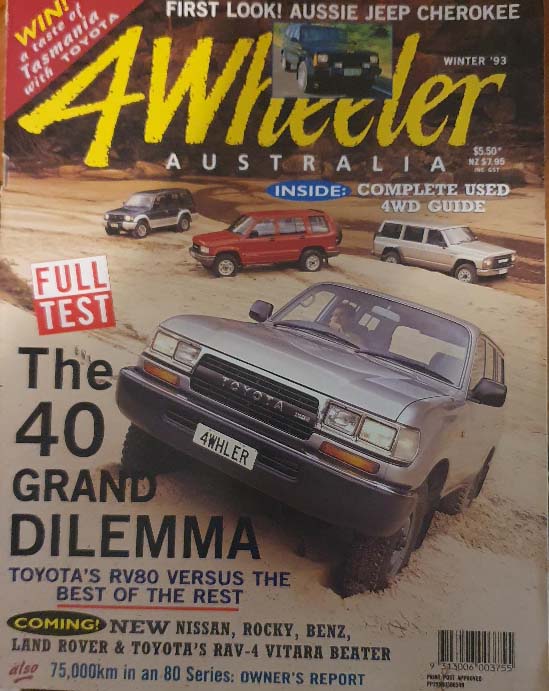 THE $40,000 QUESTION
THE $40,000 QUESTION
What does $40K get you? Suddenly, the answer has changed from top-of-the-line to bargain basement family wagon. Here’s four in the run for your money
How quickly times change. Not all that long ago, mention that you had around 40 gees to spend on a new beast and the choice was almost all top shelf: GXL 80 Series LandCruiser, topline GLS Pajero, Ti Patrol and even an LS Jackaroo. Not any more. The suicidally upward spiralling yen has seen all the contenders change. Now, if you want Toyota, you can have the RV (recently pushed up to $40,990 base) — that’s now entry level for the 80 Series. For the money, it’s a GLX (mid-spec) Pajero. Not only do you miss out on flared guards and side flashings, but a lot of equipment and options (like ABS).
And the Jackaroo’s now base-spec: an ‘S’. We know the equivalent Nissan is the ST, but we decided to introduce a wild card and go with the entry level ST-3 Patrol, with its Skyline-derived 3.0 litre engine and 300ZX-derived five-speed manual gearbox. Would it represent better value-for money — something that’s becoming increasingly difficult to find with the Japanese product?
Story: IAN GLOVER Photography: WARWICK KENT
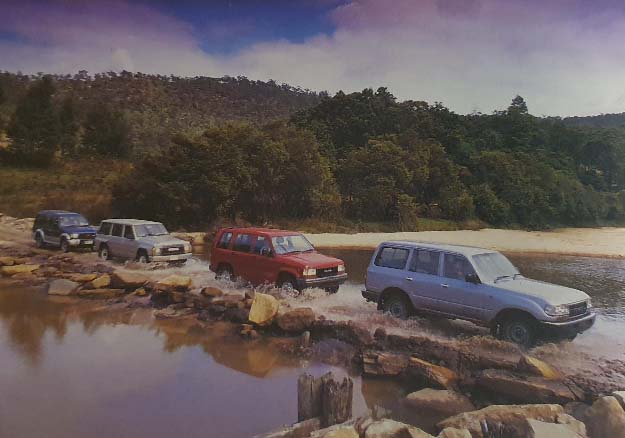
PRICES/EQUIPMENT
CRUISER ★★
JACKAROO ★★★
PAJERO ★★★
PATROL ★★★★
At $36,804 (including two grand’s worth of optional air), the Nissan ST-3 is about $4000 cheaper than a base Toyota RV, let alone our test vehicle, which was fitted with air ($2300) plus front and rear diff locks ($2317), bringing the total ask to $45,607, or almost $9000 more than the Patrol. Neither vehicle comes with a diesel option; despite an upgrade last year which embraced better seats, larger tyres and a four-speaker radio/cassette which makes the RV’s AM/FM radio-only sound more like a cornflake packet giveaway, ST-3 remains the off-road buy of the month. The success of the budget-priced Patrol surprised even market crystal ball gazers at Nissan.
On the other hand, the RV—if not a new vehicle—is certainly a new and purpose-built variant of the 80 Series, according to Toyota spokesmen. It’s designed to appeal to a new market: the ‘family segment’, which has settled to create a separate category above standard 4WD wagons and below the luxury segment which dominates wagon sales. According to sources at Nissan, the ST-3 sells on price alone, whereas Toyota dealers say RV80 buyers are turning away from Pajeros and Jackaroos, realising they can get far more interior space with the Cruiser.
However, with both the Nissan and the Toyota, it’s petrol engines and manual gearboxes—not quite the case with the smaller 4WDs. At $40,831 you’ll get a GLX 3.0 litre V6 auto Pajero, or, for $40,293, a GLX manual diesel Pajero. If you're going Holden, it’s not quite so easy. At $39,292, the ‘S’ four-door 3.2 litre V6 manual is right on the button, but an auto option pushes the ask to $41,529, and the 3.1 litre intercooled turbodiesel winds the wallet out to $42,646. Compared with what 40 grand used to get you — it’s no more a matter of what you don’t get with the Holden and Mitsubishi.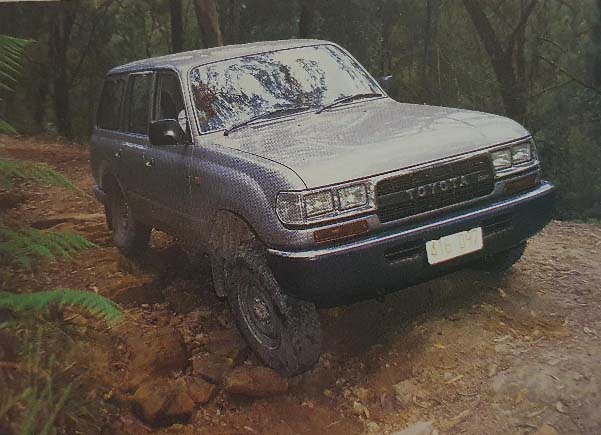
Cosmetically, the Pajero lacks two-tone paint and the chrome wheels and blackening around the side windows. There are no colour-keyed mouldings such as those found on more upmarket cars, no power radio control or central key speakers. You don’t get the option of a sunroof, cruise control, power windows, suspension seats, rear diff lock and variable shock absorbers. You do get optional full-time 4WD.
Considering it’s baseline, the part-time 4WD Jackaroo ‘S’ four-door is remarkably well-specced. You can specify metallic paint, intermittent (but not variable) front and rear wipers are standard, there’s a driver’s footrest, three rear children’s seat anchorage points and childproof door locks. It comes with steel wheels, grey side door handles, manual freewheeling hubs, a less sophisticated sound system, base seats (no split rear seat), manual windows and a rear window demister.
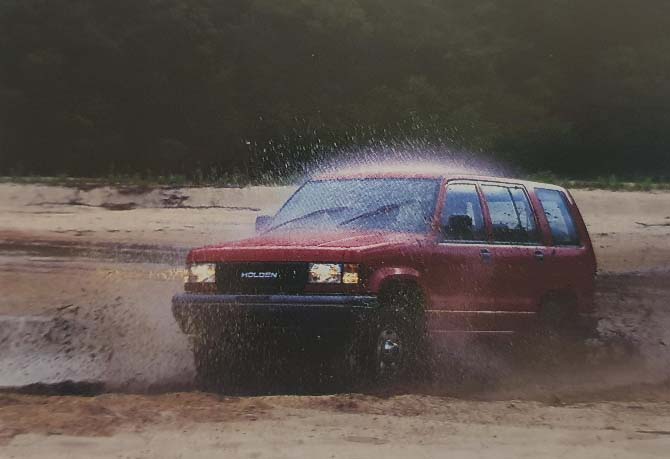
A few cosmetic touches are also lacking. There’s no blackout treatment for the side window surrounds, two-tone paint and electrically operated radio antenna. The only piece of equipment which the Toyota has and the Nissan lacks is a map light. Despite Toyota’s legendary attention to ergonomics and an undeniably more aesthetic, practical dash, Nissan again scores for some controls, like the rocker switch for rear wiper activation where the Toyota driver has to twist and pull the column stalk — not something you like to admit to on a road test, nor at any other time really.
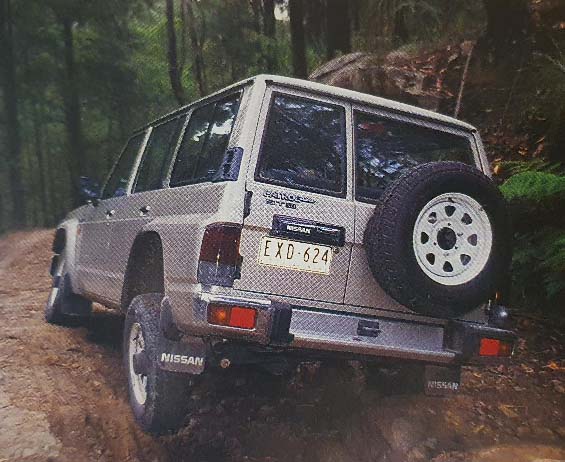
ACCOMMODATION
CRUISER ★★★
JACKAROO ★★★
PAJERO ★★
PATROL ★★

Have a gander at Patrol (above) goose-stepping over off-road obstacles; Cruiser is equally adroit
Comparing the two bigger vehicles first, we discovered another Toyota plus when packing for the trip. While both vehicles have three rows of seats, the Cruiser’s middle row folds forward with the head restraints intact — an achievement well beyond the capability of the ST-3. However, where the Patrol used to run second best to most other vehicles in the room stakes, that’s no longer the case, with taller testers citing lack of lumbar support in the Cruiser as prime reason for preferring the Patrol over long distances. Though neither Japanese vehicle has the low waistline of a Discovery or Range Rover, even smaller variety rear seat passengers should have ample vision out the windows to enjoy the passing panorama, but it’s worth pointing out that on long hauls, those in a Cruiser will be more comfortable, simply because of better ride quality.
As we’ve mentioned before, the Nissan interior is not particularly space efficient, and the tape measure bears that out. The Cruiser has better front and rear knee and shoulder room, but having said that, there’s no reason for complaint in the Patrol either. The same is true of the luggage area. Having had a Series 80 and a Patrol parked in the garage for 18 months and two years respectively, we concur with the volumetric measurements in saying you can fit more baggage in a Cruiser, though we know of one owner who stepped out of a Patrol into an 80 and complained he couldn’t carry the same amount of gear. It all depends on the size and shape of the gear you tote, we assume.
With our smaller wagons, the difference with the big boys’ cargo areas isn’t as marked as it once was. Jackaroo buyers particularly will be impressed with an interior that offers not just more luggage room, but a more relaxing, spacious interior in general. Comparing front seats, Pajero and Cruiser are on par, but the Mitsubishi loses points because of a slightly skewed driving position and the old bugbear of orange-on-grey dials which fade into illegibility with the sun behind you.
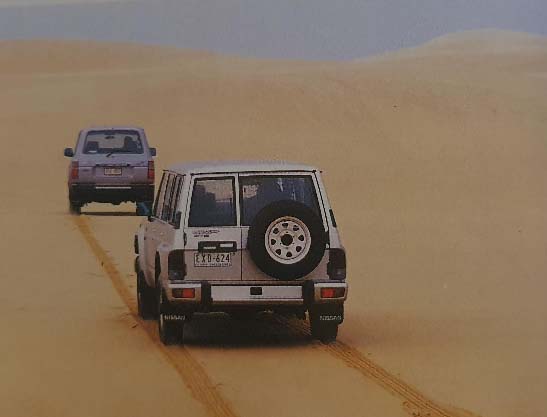
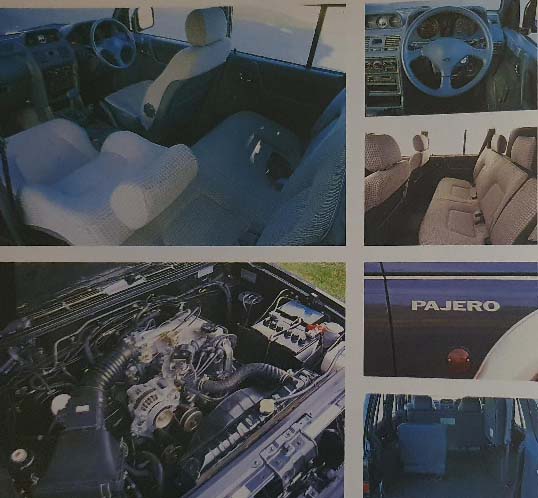
Pajero GLX fares pretty well —
losses in engine stakes are compensated for by fairly precise steering and a ride/handling combination which is most car-like of the quartet, plus offering the option of permanent 4WD.
Slightly skewed driving position and old-fashioned, sometimes illegible dash are negatives, as is limited wheel travel off-road.
FUEL ECONOMY
CRUISER ★★★
JACKAROO ★★
PAJERO ★
PATROL ★★★★
On test, average city running favoured the RV, which was unstressed in all conditions, returning a best figure of 14.0L/100km. In between ran the Jackaroo (14.3L/100km) and the Pajero (14.8L/100km), with the ST-3 worst with 15.9L/100km.
Even though the smaller engines are about the same capacity—all tiddlers against the Cruiser’s 4.5 litres—with the Jackaroo edging to 3.2 litres against the remaining 3.0s, the on-road manners of the Patrol has a second throat on the carbie which opens up around 3200 revs, and then those still awake begin celebrating. And even out on the fuel-compensated course, it was enough to stir the Patrol porridge. Those who weren’t used to the strengths and weaknesses of the 3.0 litre GQ complained of a loss of power and torque on gradients; testers with a “cellar palate” simply changed down earlier and applied the Welly, while 4Wheeler footed the fuel bill.
Even so, the Patrol didn’t have the worst figure on test. Out on the open road, where it can lope and breathe easily, it managed 17.8L/100km, just pipped by the Cruiser’s 17.7L/100km, and lots better than the bent sixes of the Jackaroo and Pajero, which returned 18.3L/100km and 19.3L/100km respectively. And, surprise surprise, Nissan won overall in efficiency, with an averaged figure of 15.8L/100km elbowing out Toyota’s 16.3L/100km, Holden’s 16.6L/100km and Mitsubishi’s 17.5L/100km.
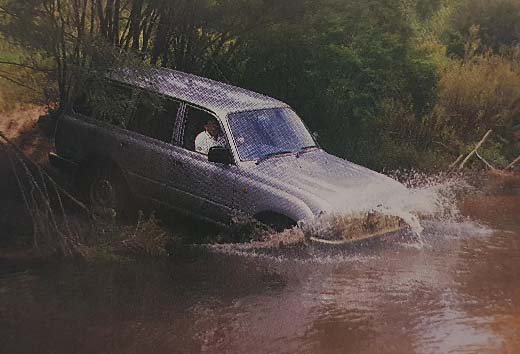
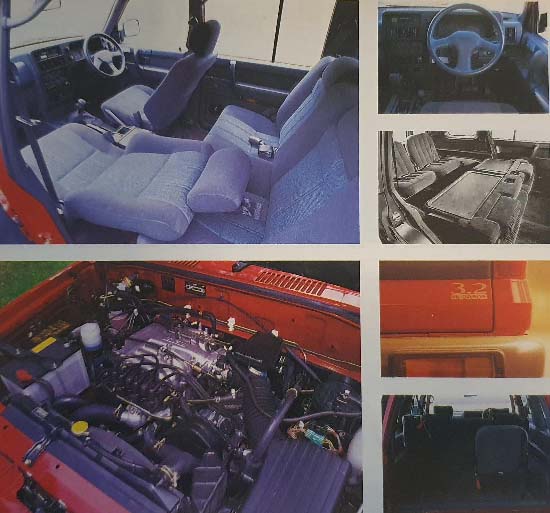
Though ‘S’ Jackaroo is remarkably well-specced for a baseliner, it lacks creature comforts and conveniences compared with more upmarket models; however, all share a new interior which has far more luggage space and room for driver and passengers. On the track, 3.2 litre V6 is a real goer, giving Cruiser’s much bigger motor a run for the money.
PERFORMANCE
CRUISER ★★★★★
JACKAROO ★★★★ ★
PAJERO ★★★
PATROL ★★
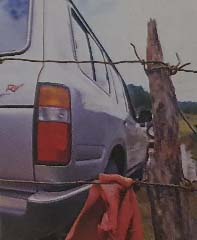
Out on the expressway, it’s easiest to get booked with Toyota’s free-revving 4.5 litre petrol engine. Eager, alarmingly quiet, with the insidious manipulative power of a 15-year-old malt, suddenly, the needle’s on 140km/h when your brain’s still back on 80.
Once again, the Nissan falls away on the hills and after the formalities we compared back to our closest test track figures from the day before, when the other vehicles made the Patrol look like it needed to fit afterburners on its wheel-arches. Despite having a torque-sapping auto transmission (as with the Pajero), it was the Jackaroo which really surprised the track. Sure, the LandCruiser was quickest from rest to 60km/h at 8.3 seconds—almost a full second faster than the ST-3—but the Holden and Mitsubishi managed 5.6 seconds and 5.9 seconds respectively.
Then things started to get interesting. To 80km/h, the Jackaroo was two tenths of a second faster than the Cruiser and to 100km/h, three tenths of a second faster. It was only at the top end that the Cruiser again took over, registering 19.9 seconds to reach 120km/h against the Holden’s 20.6. Interestingly enough, top end proved to be the Patrol’s saving grace. Where it lagged behind the other three in all acceleration figures, to 120km/h it was quicker than the Pajero at 21.2 seconds versus 24.5. Plainly, the Pajero runs out of puff; 400 metre honours, for example, ran Cruiser by a whisker from Jackaroo, then Mitsubishi, with Patrol making its run to the line and closing.
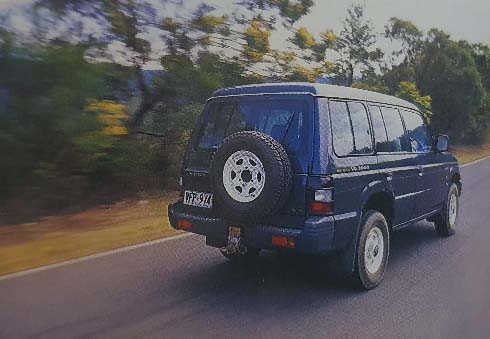
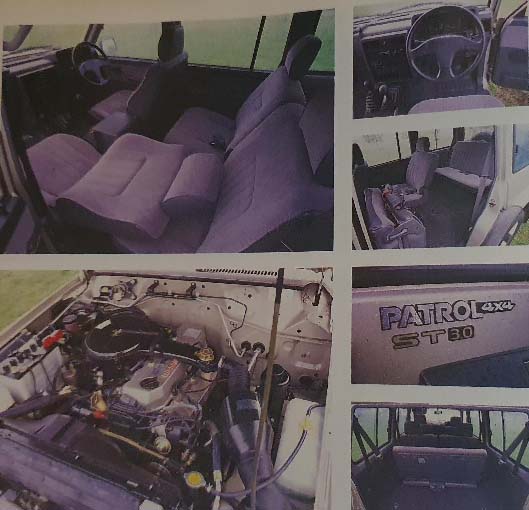
Despite a now decidedly superseded feel and perhaps looks, Patrol fights back with great value for money and better appointments than most, including central locking, power aerial and a good quality sound system. Although it has a big (4.2 litre) engine, it’s outclassed by bigger capacity Cruiser and more powerful plants of the other vehicles.
ON THE ROAD
CRUISER ★★★★★
JACKAROO ★★★★
PAJERO ★★★
PATROL ★★★

It’s remarkable how 4WD design has progressed, particularly over the past couple of years. On fast, twisting and even broken tarmac, all vehicles ‘stick’ well, with no reason for complaint about the handling characteristics of any. Despite its bulk, the Cruiser is a match for any of the big three. It corners at almost any speed without perceptible oversteer or understeer (largely thanks to permanent four-wheel drive, but a good balance is a factor here as well). It isn’t upset by mid-corner potholes and is capable of changing direction very quickly and without drama.
The Jackaroo’s right up there too, coping with everything with quiet aplomb, shading the Patrol and Pajero. These two vehicles represent opposite ends of a spectrum. The Patrol is solid, even stolid and, perhaps more than the Cruiser, conveys a constant reminder of its mass—it’s the least willing of all four to change direction quickly.

On the other hand, the Pajero still embodies the light, forgiving car-like qualities which have made it so popular with first-time 4WD buyers. It’s only when the bitumen turns to dirt that the Mitsubishi betrays a lack of comparative integrity, shaking all home on the ruts and rivets. And where the Patrol is unfazed, rough dirt also shows up a weakness in the Holden’s front end as the shock absorbers stop trying. Here, the Cruiser just keeps on going and going, with plenty of useable power for steering on the throttle, good, flexible gearing and finely tuned steering. Ride quality is also excellent.
Despite what the specs say, through hairpins the Cruiser and Jackaroo need less road, with both the Patrol and Pajero having to stray wide. And though all vehicles offer excellent feedback through the tiller (with the Cruiser’s engine-speed sensitive steering having the edge), the Patrol can be vague at straight ahead and the Pajero is a tad too light.
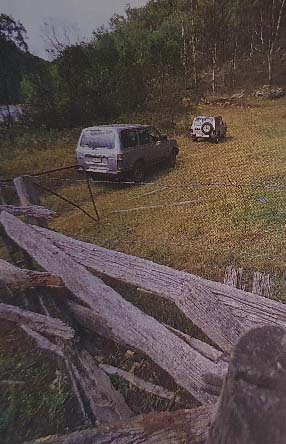
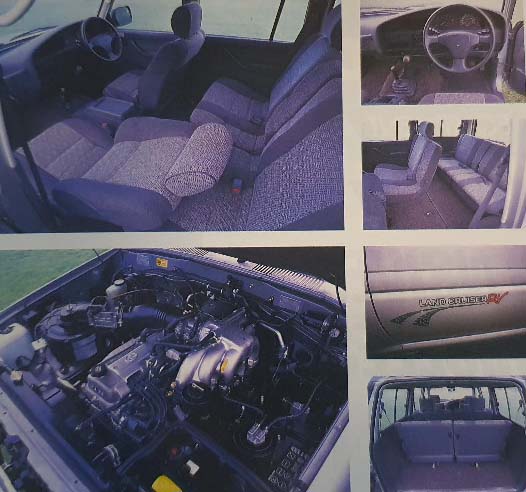
Cruiser scores big points with superb engine, twin diff lock options and magnificent ride and handling, loses out on rapidly increasing price and a paucity of equipment levels compared with other vehicles.
For sheer versatility both on road and off, Cruiser is hard to go past, and 4.5 litre engine is a better multipurpose donk than more hi-tech V6s.
OFF ROAD
CRUISER ★★★
JACKAROO ★
PAJERO ★★
PATROL ★★★
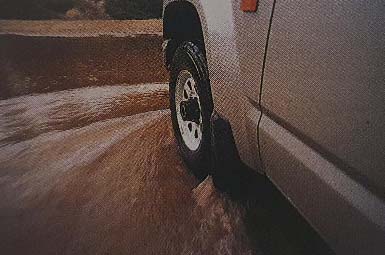
For trail work, even though the Mitsubishi and Holden have standard rear limited-slip diffs, they’re let down by average gearing (even in manual form) and lack of suspension travel, at least in terms of the opposition on test. That’s not to say they can’t and won’t take most buyers wherever they want to go, just that they pale beside the more capable Cruiser and Patrol. And here, once again, the Toyota has the edge.
Over bad rock ledges and loose, shaley debris, the Patrol manages to keep rubber on the ground at most times, but the sports car-derived gearbox simply finds the going too hard, even in low range. On occasions, you have to ride the clutch to prevent stalling and, not unexpectedly, downhill the Patrol does not have enough engine braking. Off-road, it’s also more comfortable than the Toyota, exhibiting more pitch and yaw, but wins points with a bonnet that’s easier to see over, and a transmission-mounted handbrake. In steep pinches downhill, the RV demonstrates uncharacteristic transmission snatch and whine, but absolutely no runaway.

Prospective Pajero and Jackaroo buyers who plan on a bit of beach work are far better off with the auto versions. In manual form, light drivetrains and the heavy, torque-sapping nature of sand just don’t mix; the Holden in particular burns out the clutch in a matter of minutes. Literally. Even with slushboxes, it’s a good idea to keep an eye on the automatic transmission fluid warning light.
Of the bigger pair, the Cruiser has more than a nose in front. Where the Patrol needs tyre pressures down to 130kPa, the RV runs on standard road pressures, with plenty of power and torque on tap in first, second, even third gears. It also gives a very comfortable ride in those badly chopped-up, rutted conditions, with responsive steering to stop tramlining.
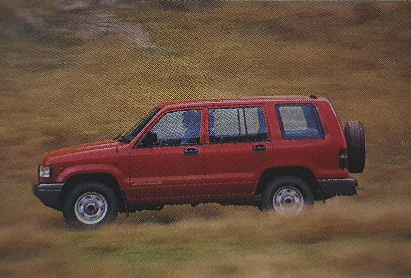
CONCLUSIONS
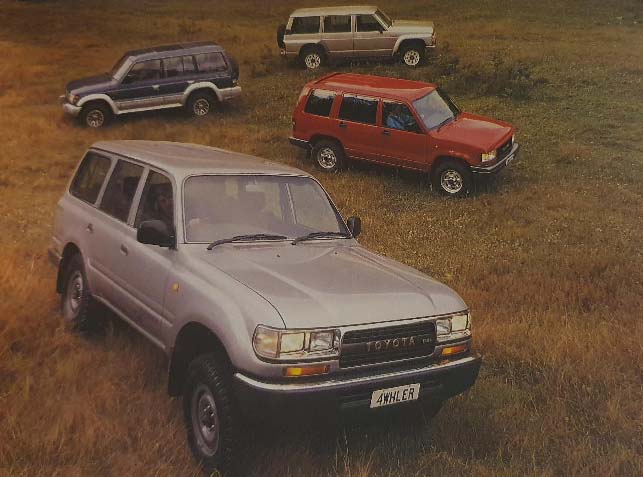
The Jackaroo and Pajero are signs of the times and harbingers of the future of Japanese vehicles, where we’ll be paying more for progressively less: less equipment and trim levels, yet more for the money. That aside, both will suit the more frugal family buyer down to the ground.
They both offer car-like behaviour and don’t have the daunting bulk which seems to grow in supermarket or underground parking lots. If you can stretch to it, the Jackaroo is nice to the pick because it smooths out the power and torque of the punchy 3.2 litre bent six engine, whereas with the Pajero we’d go manual every time to fully realise the potential of its V6 powerplant.
The ST-3 Patrol is still the value-for-money package of the Aussie 4WD scene. Because neither transmission nor engine nor even body shell owes the company anything, Nissan can afford to keep the price down, and for the price, the ST-3 is one helluva vehicle.
But in an absolute sense, the winner has to be the RV80. It’s smoothest, most powerful, relatively economical to run and feels to have tremendous structural integrity. And if you’re towing anything half decent, there’s no contest at all. Even though we know Toyota prices will climb even further, there’s a good chance the RV can be held down. It was always unabashedly basement fare; downspeccing’s almost impossible.
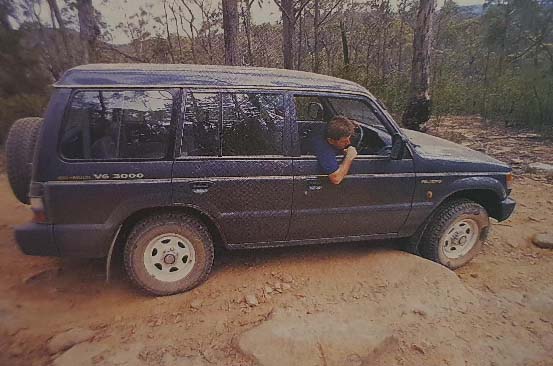
* Stop Press: RV80 is now $41,990! NB: GLS Pajero used for photographic purposes only.
Message for buyers on the horns of a dilemma: analyse needs before parting with big bucks.
